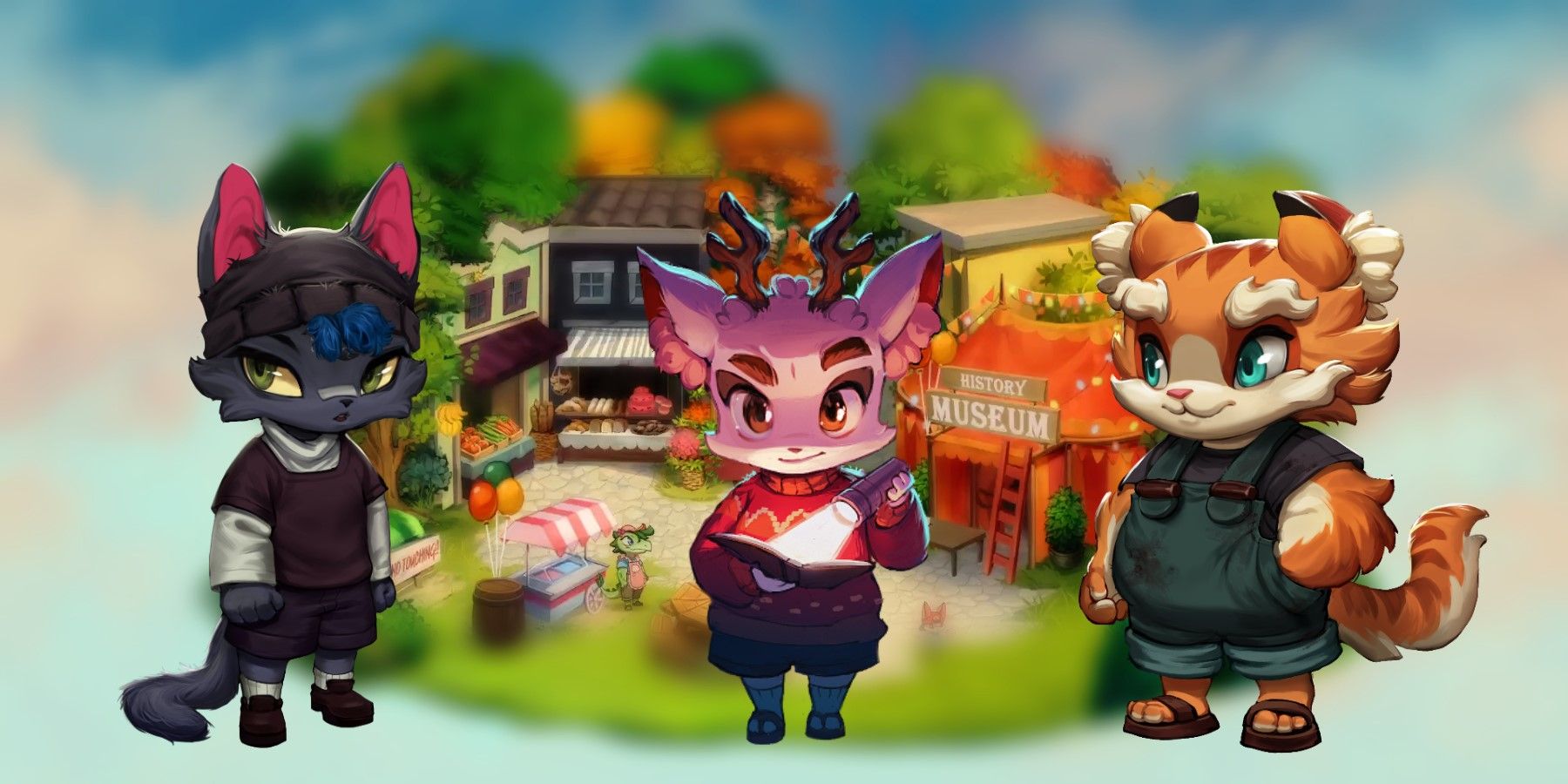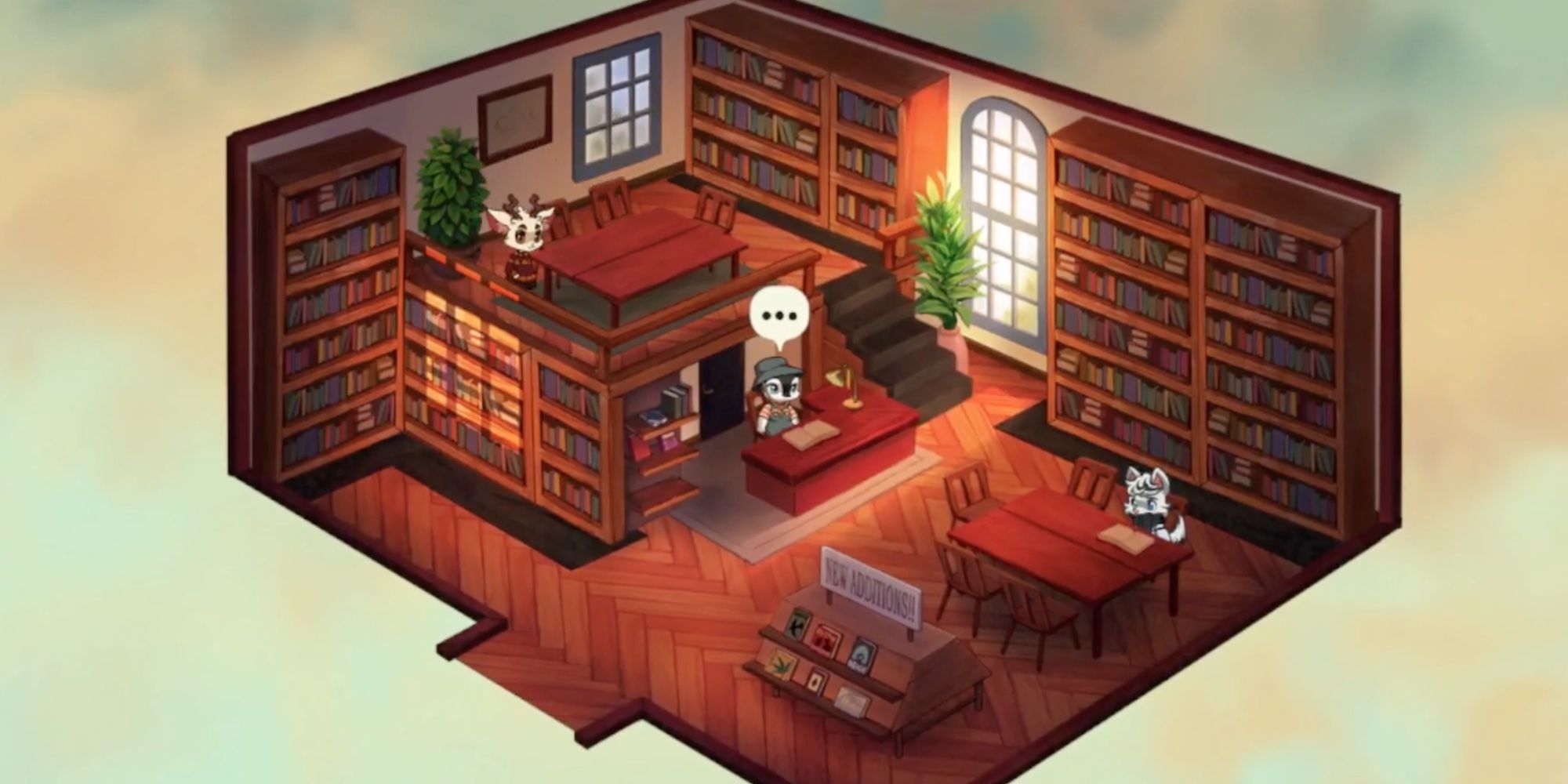With Halloween coming up in just about a month, Beacon Pines is an excellent example of the creepiness that some games are capable of instilling through graphics, stories, mechanics, and more. Beacon Pines is a new graphic adventure game by Hiding Spot Games where players are tasked with uncovering the mysteries of the titular town by exploring the world, meeting new characters, and making clever use of charms. Charms are actually the in-game version of words, which players can collect in this indie game to change the course of the story.
Beacon Pines' art style is more on the cute side than it is eerie, but the overarching story of Luka and other characters that populate the anthropomorphic town is the exact opposite. There's a general sense of creepiness to Beacon Pines that its developers initially ascribed to a similarity with the classic uncanny elements of the cult series Twin Peaks, only to discover that there's a more popular way to convey the same message thanks to Stranger Things. Game Rant spoke to Hiding Spot Games' Matt Meyer and Ilse Harting about what it was like to develop this unique game, and what players can expect.
Why Beacon Pines' Similarities With Winnie The Pooh and Stranger Things Make Sense
"Winnie The Pooh meets Stranger Things" is perhaps an unexpected way to describe a narrative game about young anthropomorphic characters, but it makes perfect sense in the case of Beacon Pines. The game's art was created by Harting after the trio of developers at Hiding Spot Games decided what direction to take Beacon Pines, which started out as a rhythm-based RPG battler. The fact that Beacon Pines changed its trajectory to a more familiar modern-age setting was a boon for Harting, who managed to give the town and the characters their own life by mashing European and American cities together.
"I'm more at ease and in my comfort zone when it comes to real life than in stuff like fantasy. There's a more direct inspiration to take from your surroundings, the people around you, and how they interact. I think it became easier to design the role for the characters when we established it wasn't going to be fantasy, more like a town environment."
The protagonist is a young deer named Luka, who draws heavily from the work of A. A. Milne. Luka is dealing with the passing of his father and the disappearance of his mother, which tie together with the mysteries surrounding the town and its inhabitants, leaving the protagonist and his friends up to the task of uncovering the secrets of Beacon Pines. Because there are sci-fi elements to the plot, and because the story follows a group of kids, the connection to Stranger Things is quite apparent.
As Luka and his friend Rolo investigate haunting phenomena in Beacon Pines, the unintended similarities with Stranger Things pop, while also retaining a Winnie The Pooh-like aesthetic for a peculiar juxtaposition. Because Meyer and fellow developer Brent Calhoun were born in the 1980s, they grew up with a certain culture of movies, television shows, and books being filled with stories about groups of youngsters in charge of solving their town's unsettling mysteries. Yet given development on Beacon Pines for what the game is today started around five years ago, Stranger Things was not an active source of inspiration.
"Maybe it's more of a trope or just a theme that was used a lot in the 80s, and it was kids being in charge of saving the day. That's still a theme you get a lot these days too, but it's sort of a timeless theme that everyone can relate to because everyone has been a kid and felt like sometimes it's up to them to do stuff, as no adult trusts you to do anything. That maps to Stranger Things pretty well too."
Regardless, Hiding Spot Games found a happy medium between Harting's beautiful illustrated journal style and the weird, sometimes disturbing stories of Beacon Pines. Players can engage with the game in interesting ways compared to other narrative titles, as they can use a feature called The Chronicle to explore all the paths not taken in their playthrough, discovering more sides to the characters and the tale as a whole. Even though this was not conceived as a coming-of-age story a la Stranger Things, Beacon Pines is bold enough to use existing tropes and challenge them to be something more, and that's something the industry will always need.
Beacon Pines is now available on PC, Switch, Xbox One, and Xbox Series X/S.


